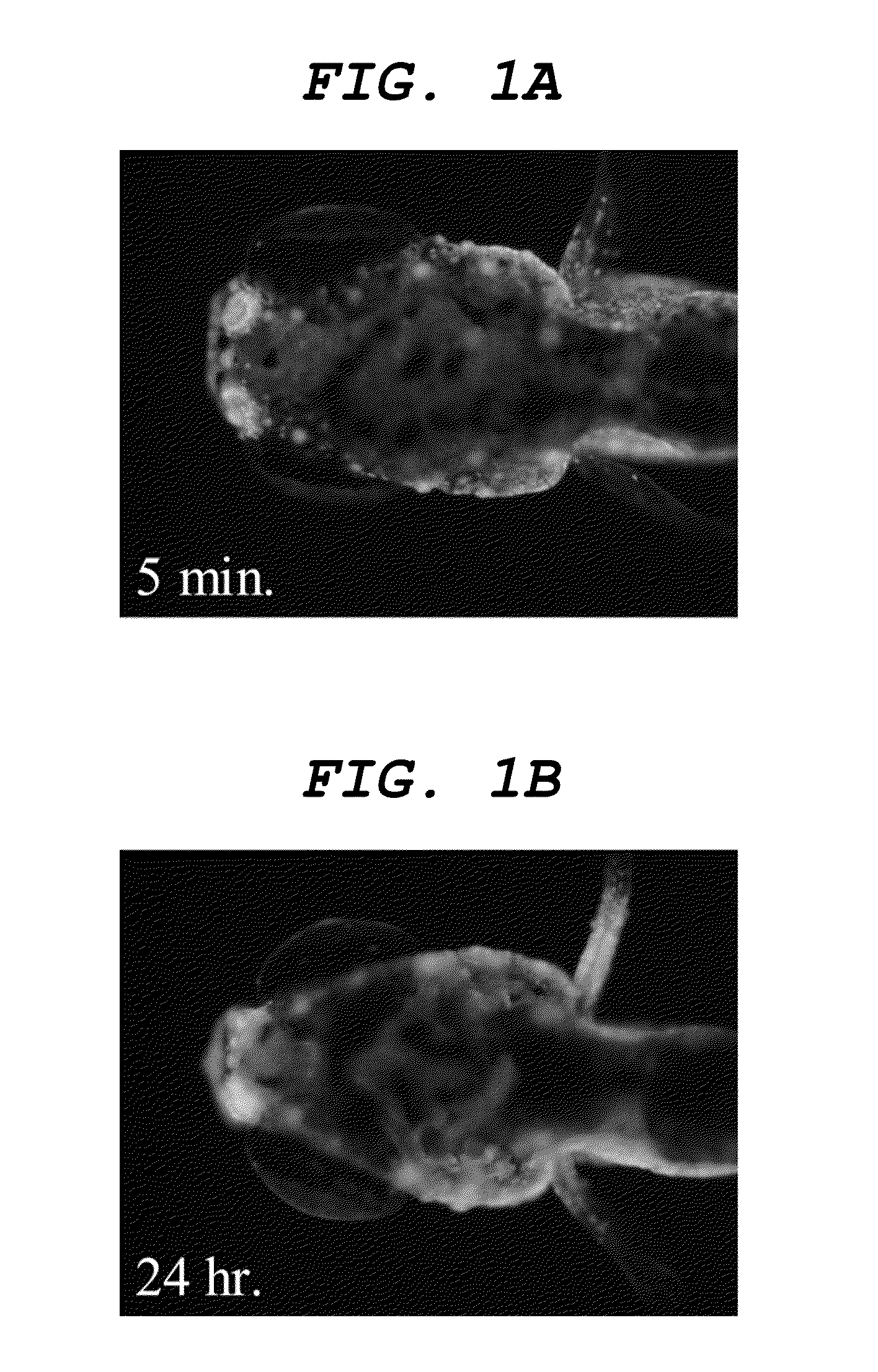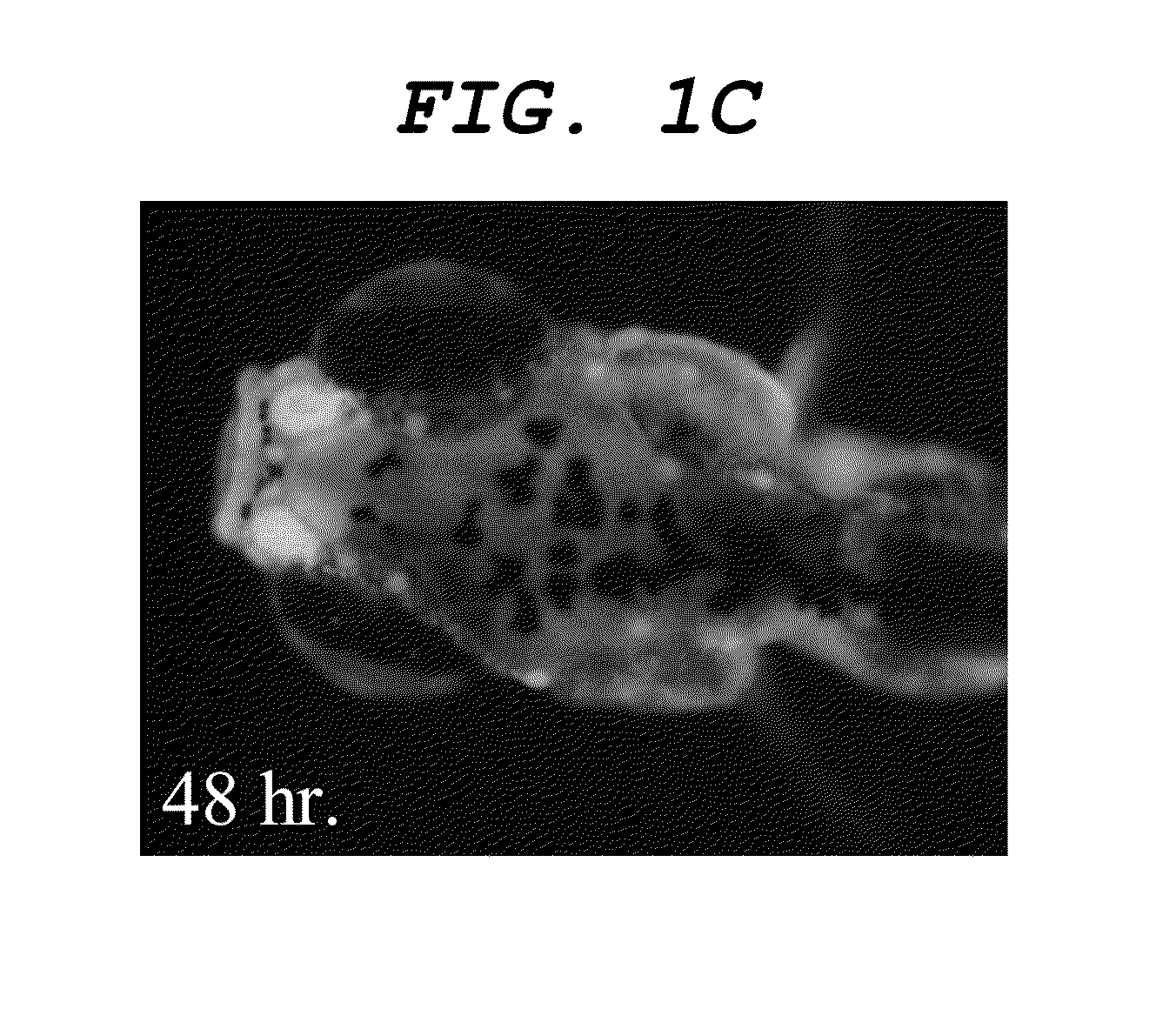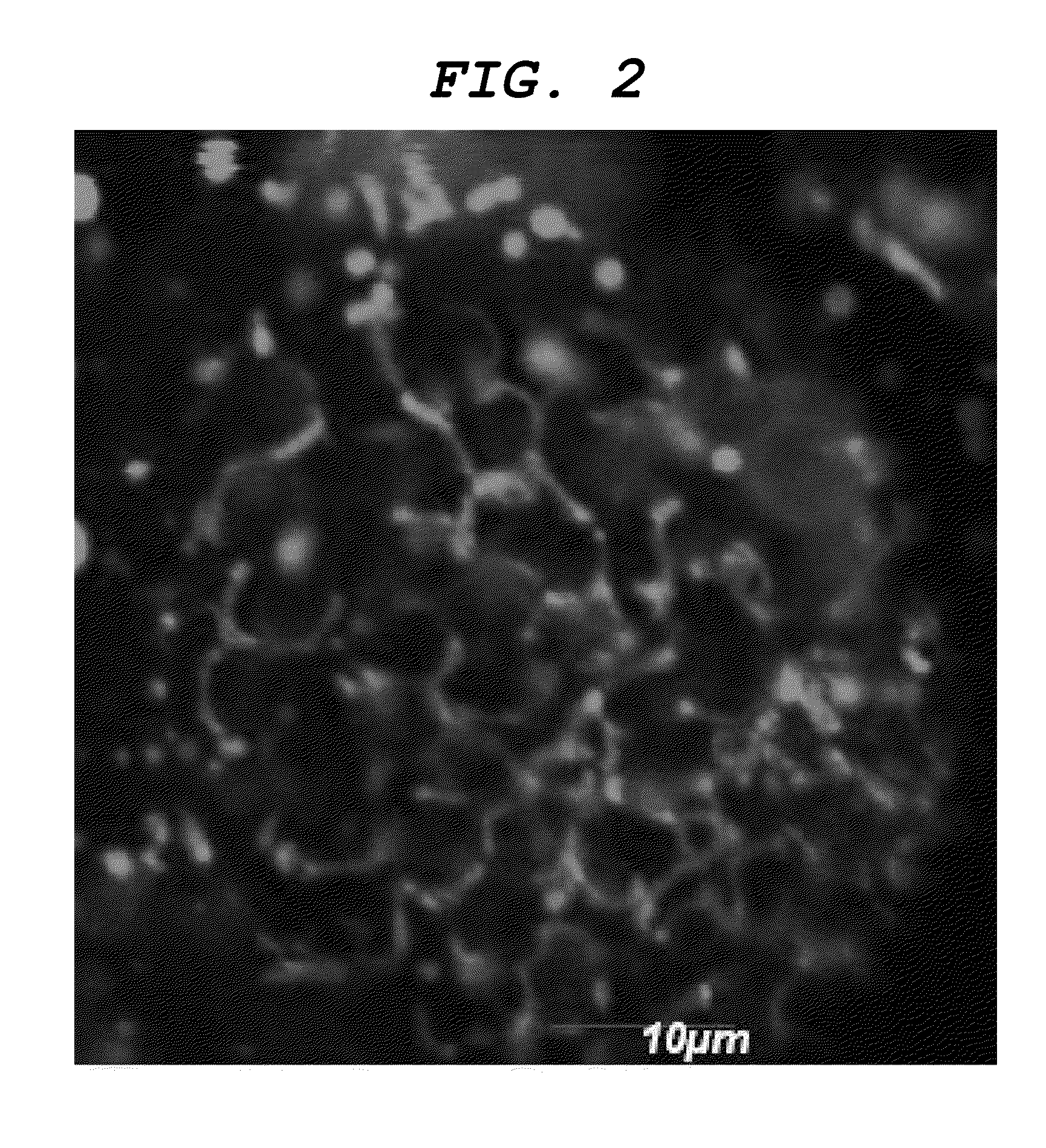Central nervous system labelling composition for intranasal administration and labelling method and screening method using central nervous system labelling composition for intranasal administration
a technology of central nervous system and labelling composition, which is applied in the direction of diagnostic recording/measuring, therapy, ultrasonic/sonic/infrasonic diagnostics, etc., can solve the problem of limited transferability of compound to the brain, and achieve the effect of reducing the influence of living bodies, high precision and easy evaluation and analysis
- Summary
- Abstract
- Description
- Claims
- Application Information
AI Technical Summary
Benefits of technology
Problems solved by technology
Method used
Image
Examples
example 1
[0107]Distilled water was added to a 1 mg / mL DMSO solution of compound 1 (as expressed by the formula (5) above) to obtain a dye solution 1 containing the compound 1 to a concentration of 200 ng / mL. 1 mL of the dye solution 1 and a 7-day-old (7 dpf) juvenile fish of zebrafish were put into an arbitrarily selected well of a 24-hole multi plate (available from IWAKI) and left there for an hour. Thereafter, the dye solution 1 in the well was removed and an operation of replacing it with 1 mL of distilled water was repeated three times in ten minutes. The elapsed time after the last solution replacing operation was measured and the juvenile fish was taken out from the well when a predetermined time period had elapsed. The juvenile fish was buried in 5% low melting-point agarose gel on a glass slide to restrict any movement and the dyed state of the central nervous system of the zebrafish was observed from a lateral side and the vertex by using fluorescent microscope (MZ16FA: available f...
example 2
[0110]Dye solution 2 whose concentration of the compound 2 is 500 ng / mL was obtained by adding distilled water to 1 mg / mL DMSO solution of compound 2 (as expressed by the formula (6) above). Operations same as those of Example 1 were conducted except that the dye solution 2 was used in place of the dye solution 1 to observe the central nervous system.
[0111]As a result, a dyeability was confirmed that firstly the nasal cavity, then the olfactory bulb and finally the central nervous system were sequentially dyed as illustrated in FIGS. 3A, 3B and 3C. Additionally, a dyeability was confirmed that nerve cells of the central nervous system were also dyed as illustrated in FIGS. 4A, and 4B, which is an enlarged view of the inside of the frame in FIGS. 4A, and 4C, which is an enlarged view of the inside of the frame in FIG. 4B.
example 3
[0114]Compound 3 (as expressed by the formula (7) above) was synthesized by a method described in Japanese Patent Application Laid-Open No. 2010-169677. Dye solution 4 whose concentration of the compound 3 is 500 ng / mL was obtained by adding distilled water to 1 mg / mL DMSO solution of compound 3. Operations same as those of Example 1 were conducted except that the dye solution 4 was used in place of the dye solution 1 to observe the central nervous system.
[0115]As a result, a dyeability was confirmed that firstly the nasal cavity, then the olfactory bulb and finally the central nervous system were sequentially dyed as illustrated in FIGS. 6A, 6B and 6C. Additionally, the dyeability was confirmed that nerve cells of the central nervous system were also dyed as illustrated in FIG. 7.
[0116]The present invention provides a central nervous system labelling composition for intranasal administration that labels the central nervous system of a living biological sample by way of a new admini...
PUM
| Property | Measurement | Unit |
|---|---|---|
| concentration | aaaaa | aaaaa |
| concentration | aaaaa | aaaaa |
| concentration | aaaaa | aaaaa |
Abstract
Description
Claims
Application Information
 Login to View More
Login to View More - R&D
- Intellectual Property
- Life Sciences
- Materials
- Tech Scout
- Unparalleled Data Quality
- Higher Quality Content
- 60% Fewer Hallucinations
Browse by: Latest US Patents, China's latest patents, Technical Efficacy Thesaurus, Application Domain, Technology Topic, Popular Technical Reports.
© 2025 PatSnap. All rights reserved.Legal|Privacy policy|Modern Slavery Act Transparency Statement|Sitemap|About US| Contact US: help@patsnap.com



